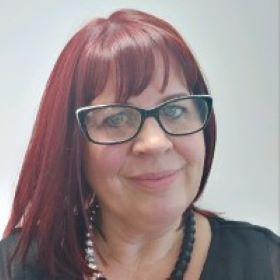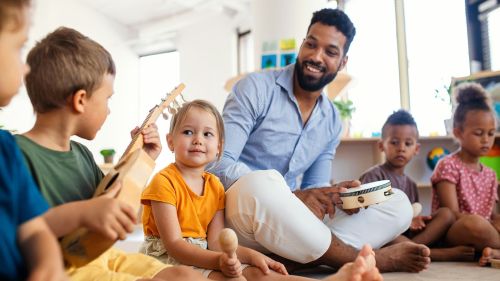There is a growing momentum for the creation of community-based safe spaces for people experiencing emotional distress or suicidal crises, as an alternative to visiting hospitals and emergency departments.
The Mental Health Commission's 'Suicide Prevention 2020' report outlined the urgent need for proactive community-based mental health services, while the National Mental Health and Suicide Prevention Plan cites 'prevention and early intervention' as the first of its five pillars.
To ensure they are implemented appropriately, Edith Cowan University (ECU) research is aiming to assist with the design of safe spaces.
A recent study asked people who had visited hospital emergency in emotional distress or suicidal crisis, what features community safe spaces should and shouldn't have to make them welcoming and effective for those wishing to use them.
In Australia, some safe spaces have been established, however many are housed within or near hospitals.
In Western Australia, these include a safe space within the Royal Perth Hospital Precinct.
ECU study lead Dr Lesley Andrew said hospitals came with many barriers when it comes to responding to people with mental health difficulties.
"A lot of the people we spoke to have been in emergency departments when they've been in crisis and it can be traumatic," she said.
"The hospital environment with nurses, uniforms, sterile places, smells, are places for people who have had a car crash or physically unwell; they're not for people who need to feel a sense of belonging and that they're welcome and safe.
"It's the exact opposite. Staff do their best but it's the wrong environment to meet the needs of these people.
Providing compassionate support
Positively, a community safe space has recently been opened in Busselton as a drop in style space for people experiencing emotional distress or suicidal thoughts, with another centre planned for Bunbury.
There are currently six safe spaces open, with non-government organisation Roses in the Ocean planning to establish a further 11 across Australia.
Dr Andrew said the main aim of safe spaces was to provide somewhere for people to go when they are feeling distressed, need somewhere to feel safe, or are in crisis already and do not wish to engage with emergency services, the hospital system or other supports that previously caused distress.
She said people could visit whenever they needed support, be it talking with peers, mental health professionals – or not to speak at all but have a friendly place to decompress.
Some models, often called Safe Havens, offer a combination of clinical staff and peer workers, while the community-led Roses in the Ocean safe spaces offer a purely non-clinical, suicide prevention peer-led option.
"Hopefully before they get to crisis point, they can just drop in and feel safe and have a chat or get whatever support it is they need in that moment," Dr Andrew said.
"It could just be feeling panic, feeling low, anxious – anything affecting their day-to-day living, ability to function and their wellbeing."
Dr Andrew said evidence from overseas safe spaces showed they often reduced pressures on the healthcare and policing systems.
"In the UK, they were putting a lot of healthcare resources and police resources towards performing mental health and wellbeing checks in the community, and these safe spaces have reduced the need for that."
What 'safe' looks like
Researchers interviewed people who had been to hospital emergency departments for mental health reasons to find out what they felt would make them feel safe, ranging from features, sounds, smells and their ideas for the running and management of the space.
"It really just takes it away from a medical model and more to social model," Dr Andrew said.
SAFE SPACE DOs
- Sofas and beanbags. 'Non-uniform' furniture
- Warm colours
- Functional spaces
- Board games, videos, colouring
- Plants and tables
- Signs that welcome in a number of languages
- Pet therapy/ fish tanks
- Calm and tranquil, low stimulus atmosphere
- Guest arts and crafts displayed-cushions etc.
- Hot beverages
- Food
- Creche
- Hotline to Emergency Department (if people wish to use it)
- Alcohol and Other Drugs protocols
- Smoking area
- Open unsocial hours
- Peers as staff. People with lived experience of suicide3 as part of recruitment panel
- Professionals, multidisciplinary clinicians (safe haven model)
- Connection pathways to a wide range of other support services in a community who can assist to address underlying contributing factors to a person's distress
- Appropriate suicide prevention training/upskilling for all staff
- Staff representative of the community in which it is located
SAFE SPACE DON'T's
- Clinical 'uniform' furniture
- Clinical posters
- White walls
- Too bright or too neutral
- Physical barriers between staff and clients such as reception
- Staff uniforms
- 'Clinical' labelling of spaces
- Tinted windows
- Signs that mention mental health
- Clinical smells
- Triggering discussions such as past crises, medication, diagnosis
- Bureaucracy-form filling. Recording of past visits (except demographics)
'What makes a safe space? Consumers' perspectives on a mental health safe space' was published in International Journal of Mental Health Nursing.
ECU authors on this paper were Dr Lesley Andrew, Dr Shantha Karthigesu, Dr David Coall, Professor Moira Sim, Dr Julie Dare and Kathy Boxall.

 Community safe spaces for people experiencing mental health issues are growing as an alternative to hospitals.
Community safe spaces for people experiencing mental health issues are growing as an alternative to hospitals.



